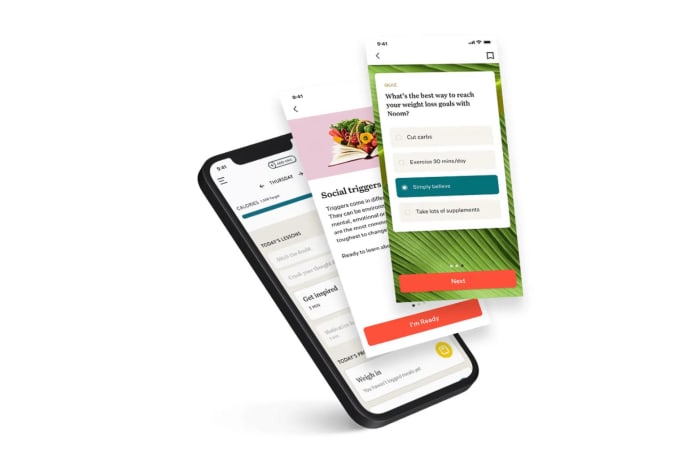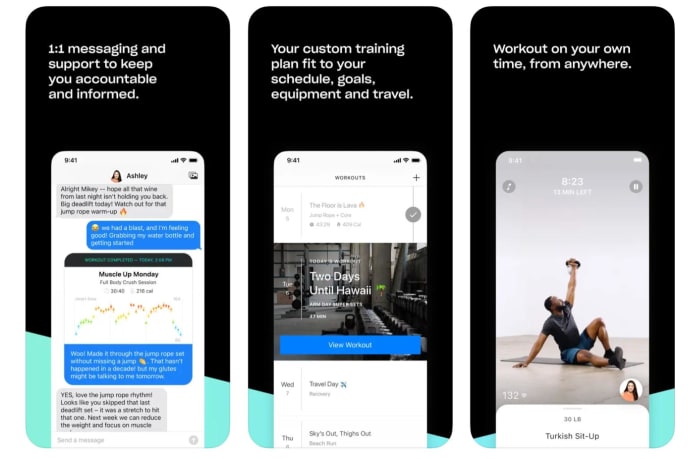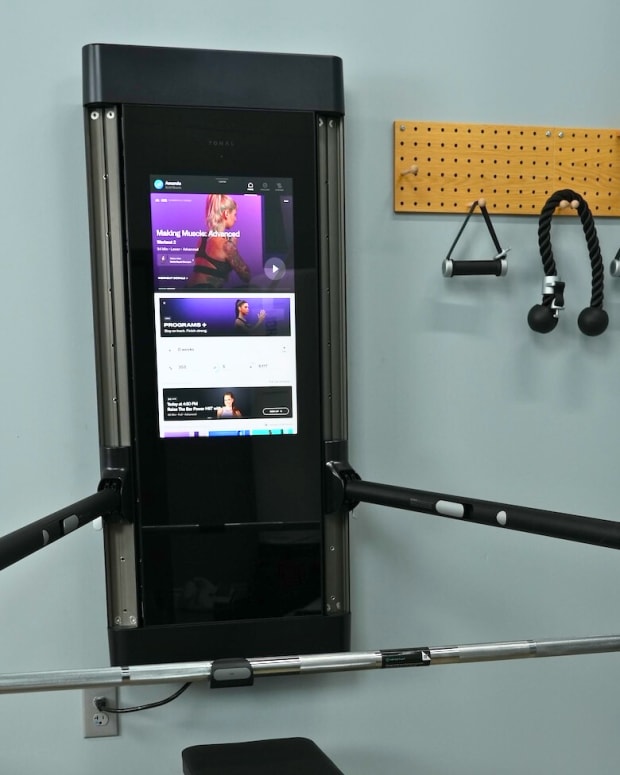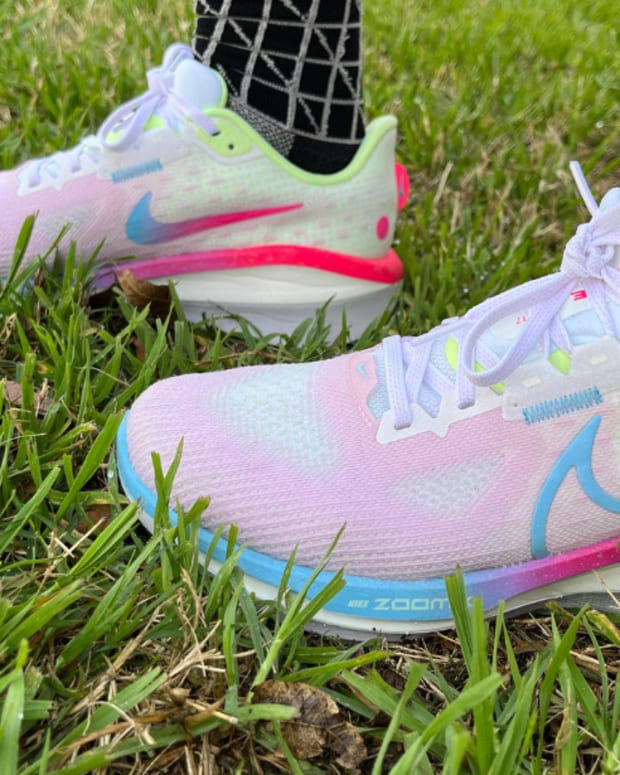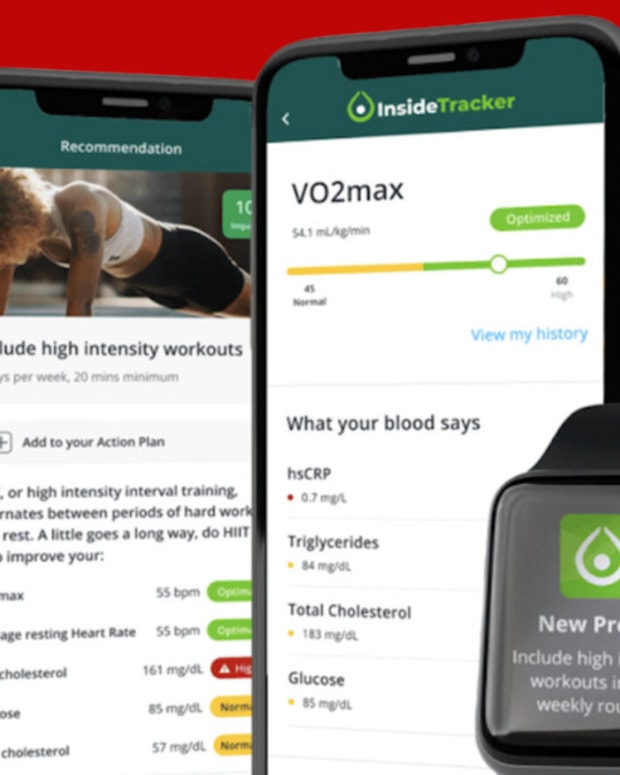The products featured in this article have been independently reviewed. When you buy something through the retail links on this page, we may earn commission at no cost to you, the reader. Sports Illustrated editorial staff are not involved in the creation of this content. Learn more here.
Losing weight is a common goal for many people, but it can be hard to know where to start. If you’re looking for a road map to guide your weight loss program, a calorie calculator can help.
Also called calorie deficit calculators, these tools estimate how many calories you burn daily so you know how many to consume to move the scale up or down. There are several types of calculators and different methods for using them to reach a calorie deficit for weight loss or a calorie surplus for weight gain.
Like any tool, a calorie calculator is only effective if you understand how to use it. This guide will tell you how calories are estimated, where to find a calorie deficit calculator and how to use one. After calculating your ideal caloric intake, we’ll show you three mobile apps to help you plan, log and track it. With a little know-how, you can use a calorie calculator to reach your goals for weight loss, muscle gain, maintenance and more.
What Are Calories?
Calories are units of energy. If you want to get technical, a calorie measures the amount of energy needed to raise one gram of water by one degree Celsius.
In nutrition, “calorie” typically refers to a kilocalorie (kcal), which equals 1,000 calories. If you look at a nutritional label for a bag of chips containing 350 calories, the food actually contains 350 kcal.
Food labels are useful because they tell you how much energy is in a food. When you consume more energy than your body needs, the excess is stored as fat. On the other hand, when you use more energy units than you consume, your body must draw from its reserves and break down fat (or muscle) tissue for energy.
How Do I Calculate How Many Calories I Eat?
There are a few different approaches to determining how many calories are in a certain food or beverage.
- Check food labels to see how many calories are in each serving
- Use a calorie counter app or website to enter food and the serving size
- Calculate the calorie content using “macros”
Once you figure out how many calories you’re eating or drinking, add them over one full day to get your daily calorie intake.
What are macros?
“Macros” is short for macronutrients. It refers to the three major nutrients that your body uses for energy: carbohydrates, proteins and fats.
Proteins and carbs each contain around four calories per gram. However, fats have a high energy value. One gram of fat contains about nine calories.
Example:
If a food has 10 grams of fat, 10 grams of protein and 10 grams of carbohydrates per serving, it will have around 170 calories per serving.
Fat: 10 grams x 9 = 90 calories
Carbohydrates: 10 grams x 4 = 40 calories
Protein: 10 grams x 4 = 40 calories
Some dietitians recommend counting macros instead of, or in addition to, counting calories for a more balanced, healthy diet. The Institutes of Medicine recommends that 45 percent to 65 percent of your daily calories come from carbs, 10 to 35 percent from protein and 20 to 30 percent from fats.
Macro calculators
Macro calculators are calorie calculators that focus on macronutrients. They can help you determine how many grams of each macronutrient you should consume daily based on your body type and goals, such as weight loss or muscle gain.
To use a macro calculator, you’ll first enter details such as your age, weight, height and activity level. Based on that information, the calculator will give you a daily calorie recommendation, plus a breakdown of how many grams of carbohydrates, proteins and fats to consume.
How to Use a Calorie Calculator for Weight Loss
A calorie calculator can be an effective weight loss tool because it helps determine how many calories you should consume daily.
To use a calorie calculator for weight loss, you must first enter your age, weight, height and activity level. Then the calculator will estimate how many calories your body needs in 24 hours on average.
To lose weight, you must take in fewer calories than you use.
How many calories are there in a pound?
In the 1950s, Scientist Max Wishnofsky published a report that calculated one pound of body weight equal to 3,500 calories. This is referred to as Wishnofsky’s Rule. It led to the idea that eating 500 calories less each day would lead to a one-pound weight loss per week.
500-calorie deficit x 7 days = 3,500-calorie deficit or one-pound weight loss
New research suggests that calculating weight loss based on the “3,500 calories equals one pound” formula is not always accurate because of how the body uses energy. Nevertheless, it is an easy, if imprecise, way to roughly estimate calories for weight loss.
How to Use a Calorie Calculator for Muscle Gain
You can also use calorie calculators to maximize muscle gain and change your body composition. In this case, it’s best to check the macros breakdown since the body needs protein to build lean body mass. Despite common misconceptions, a caloric surplus is not necessary to put on lean muscle. However, you do need more protein.
For those who are looking to put on muscle, experts recommend a protein intake of about 0.7 grams per pound of body weight. Athletes who want to lose weight and build muscle may even exceed that.
How to Use a Calorie Calculator for Weight Gain
If you’re on the other end of the spectrum and want to gain weight, calorie calculators can help you too. Consuming more calories than you burn creates a calorie surplus and can lead to weight gain over time.
Aim for a gradual weight gain of 0.5 to one pound per week by consuming an additional 250-500 calories per day on top of your normal calorie needs.
How to Use a Calorie Calculator to Maintain Weight
Once you’ve reached your goal weight, keeping track of your calorie intake can help you stay there. To keep your healthy weight stable, you must consume approximately the same number of calories as you burn each day.
Apps to Help You on Your Weight Loss Journey
Weight loss apps are helpful because they take into consideration an important fact: Calorie counting alone is not the best way to lose or gain weight. There are many other factors that can contribute to weight changes, including what kind of food you're eating, how much activity you're doing throughout your day, how hydrated you are and more.
In addition, studies show that “dieting” causes hormone changes that stimulate appetite and conserve fat storage. Weight loss is also about changing certain behaviors that may have led to weight gain.
Before starting a weight loss program, consider how it addresses all three factors: diet, exercise and your habits and behaviors. Here is a look at three popular mobile apps that can help.
Noom
Key Features:
- Psychology-based approach
- Daily five, ten or 15-minute lessons
- 24/7 access to a Noom coach
- No foods are off limits
Noom is a popular app for people wanting to lose weight and live healthier. The app offers a comprehensive program focused on behavior change. Daily lessons challenge users to understand how and why they eat the way they do. At the same time, it provides a “calorie budget” and a long-term plan for sustainable weight loss.
Noom users also get access to coaches trained in behavioral therapy to help them make changes that will stick. The program is designed for long-term, sustainable weight management. You can expect to lose one to two pounds per week on the plan.
Research shows this plan works. Over nine months, 77.9 percent of Noom users lost weight, according to a study of nearly 36,000 people.
Who should use it
Noom could be useful for people who want to lose a lot of weight because it focuses on the psychology behind weight, and can help users change their habits and how they think about their relationship with food. It is also the most personalized program in this guide, so it’s the best pick if you’re looking for customization.
Who shouldn’t use it
Someone looking for a cheap program might find Noom a bit pricey. The app offers a seven-day free trial, but after that, the cost is around $70 per month to pay-as-you-go. However, the annual membership is around $17.50 per month. Also, it might not be right for users who don’t have a smartphone or tablet and those who don't have the time to spend on daily lessons and food tracking.
To learn more about this program, read our in-depth Noom review here.
WW
Key Features:
- Offers weekly in-person and virtual workshops
- The mobile app offers extra wellness features, including mindfulness meditations
- Recipe database with over 12,000+ recipes
- Online community with Instagram-like mobile feed to connect with other users
WW, formerly Weight Watchers, is a well-known program that’s been around for 59 years, and it continues to evolve — the latest update rolled out in November 2022. This program calculates your daily and weekly “points” allotment based on age, height and activity level. It also takes into account certain health conditions and offers a special plan for diabetics.
The plan assigns a point value to each food and beverage based on its calorie, sugar, protein and saturated fat content. Foods like grilled chicken breast, beans, vegetables and fruits count as zero points, so they can be enjoyed generously. You log what you eat throughout the day and stay under your points budget to lose one to two pounds per week.
The WW plan is based on two things: counting points and community. To follow the plan, users track what they eat daily in the mobile app or online. To stick with the plan, they engage in the WW community by attending weekly workshops in person or virtually and checking in throughout the day in the online community. This approach has been effective in scientific studies.
Who should use it
WW in-person and virtual workshops are great for extroverts and anyone who needs to feel like they aren’t “doing this alone.” Users looking to connect and learn from others should check out the online and mobile communities.
Also, WW encourages nutritious, low-calorie foods, which may be ideal for people with diabetes, high cholesterol and high blood pressure. The program is budget-friendly, with monthly plans ranging from $10 to $25.
Who shouldn’t use it
Those with busy, on-the-go lifestyles may find it difficult to keep up with tracking.
To learn more about this program, read our in-depth WW review here.
Future
Key Features:
- Weekly customized workout plans
- Coaching from a certified personal trainer
- Equipment-free strength training for weight gain
Future is a mobile weight loss and personal training app that matches users with certified trainers who create customized workout plans and provide one-on-one coaching and support.
Users who want or need help with the exercise part of the equation will love the guidance and accountability in this program.
To start the program, you’ll answer questions to match you with a coach. You can choose from the suggested trainers or pick your own. Once you’ve been paired with a coach, they’ll set up an introductory FaceTime call to get to know you and learn more about your goals. Then, they’ll design your personalized workout plan.
Each week, you’ll get an updated plan with new movements and instructions on how to do them correctly. You can contact your coach anytime for clarification or to check how you’re doing with the workouts. If you’re unsure about your technique or how to use certain workout machines, you can even send videos of yourself performing the moves to your trainer for feedback. If you don’t have a home gym, no worries. Future offers equipment-free workouts for every fitness level.
Who should use it
Future might be ideal for users who want to focus on toning up or gaining lean muscle mass. It’s also a great option for users needing one-on-one fitness coaching from certified personal trainers or help designing workouts to fit their lifestyle. If you’re investing in home fitness equipment and want to get the most use out of it, Future’s trainers can help.
Who shouldn’t use it
The price tag might not be right for everyone. Although Future costs much less than in-person personal training, it is expensive—$149 per month.
Also, to get the full capabilities of the digital app, Future users need a smartwatch. An Apple watch is preferred.
To learn more about this popular app, read our in-depth Future review here.
FAQs
How many calories should I eat to lose one pound a week?
Individual calorie requirements vary depending on age, gender, weight, height, activity level and overall health. Always consult with a healthcare provider, registered dietitian or nutritionist for personalized advice on weight loss goals and calorie intake recommendations.
How can I speed up my metabolism?
Physical activity, such as cardio and weight lifting, is one of the most effective methods for increasing metabolism. It builds muscle mass, which burns more calories than body fat and can raise your resting metabolic rate.
Staying hydrated and eating small frequent meals throughout the day can also stoke your metabolic fire.
How many calories is too little?
In general, consuming fewer than 1,200 calories per day for women and 1,500 calories per day for men may be too little for most people. However, some people require fewer calories based on age, weight and lifestyle.
Is eating one meal a day healthy?
The one-meal-a-day (OMAD) diet may be safe and healthy for some people, but is not be suitable for everyone. Research shows that eating one meal a day does lead to weight loss. Meanwhile, it may also increase blood pressure and cholesterol, and can be a gateway to disordered eating.
How many calories a day is considered a lot?
The amount of calories to be considered “a lot” depends on various factors, including a person’s age, gender, height, weight and activity level. However, as a general guideline, consuming more than 2,500 calories daily is considered excessive for an adult with a sedentary lifestyle. It is always best to consult a healthcare professional or registered dietitian to determine your specific calorie requirements.
Prices are accurate and items in stock as of publish time.

